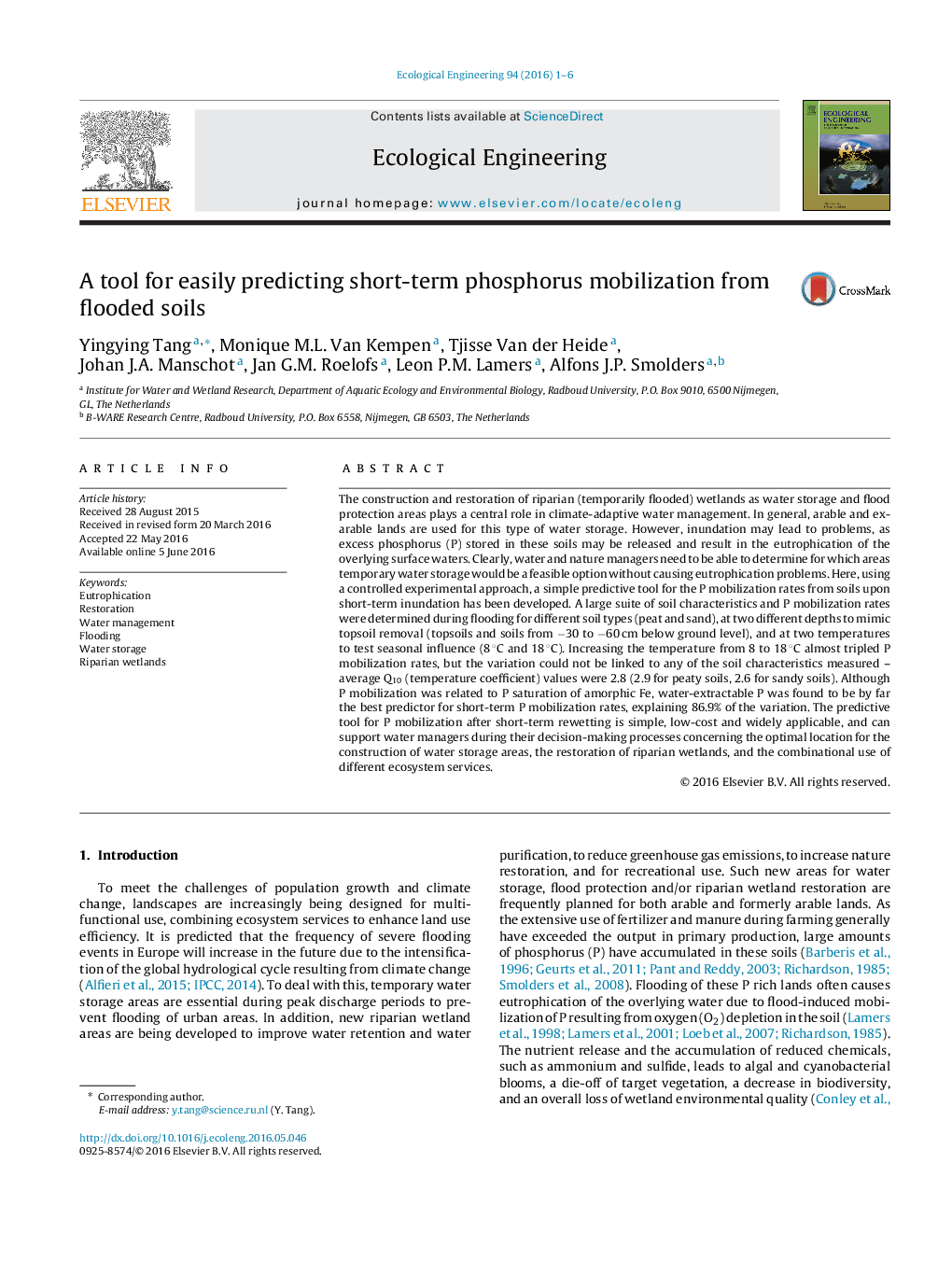| کد مقاله | کد نشریه | سال انتشار | مقاله انگلیسی | نسخه تمام متن |
|---|---|---|---|---|
| 4388524 | 1618005 | 2016 | 6 صفحه PDF | دانلود رایگان |
• We determined the best predictor for flood-induced P mobilization.
• Multi-model inference proved that water-extractable P is an excellent predictor.
• This provides a widely applicable, cost-effective tool for decision support.
The construction and restoration of riparian (temporarily flooded) wetlands as water storage and flood protection areas plays a central role in climate-adaptive water management. In general, arable and ex-arable lands are used for this type of water storage. However, inundation may lead to problems, as excess phosphorus (P) stored in these soils may be released and result in the eutrophication of the overlying surface waters. Clearly, water and nature managers need to be able to determine for which areas temporary water storage would be a feasible option without causing eutrophication problems. Here, using a controlled experimental approach, a simple predictive tool for the P mobilization rates from soils upon short-term inundation has been developed. A large suite of soil characteristics and P mobilization rates were determined during flooding for different soil types (peat and sand), at two different depths to mimic topsoil removal (topsoils and soils from −30 to −60 cm below ground level), and at two temperatures to test seasonal influence (8 °C and 18 °C). Increasing the temperature from 8 to 18 °C almost tripled P mobilization rates, but the variation could not be linked to any of the soil characteristics measured – average Q10 (temperature coefficient) values were 2.8 (2.9 for peaty soils, 2.6 for sandy soils). Although P mobilization was related to P saturation of amorphic Fe, water-extractable P was found to be by far the best predictor for short-term P mobilization rates, explaining 86.9% of the variation. The predictive tool for P mobilization after short-term rewetting is simple, low-cost and widely applicable, and can support water managers during their decision-making processes concerning the optimal location for the construction of water storage areas, the restoration of riparian wetlands, and the combinational use of different ecosystem services.
Journal: Ecological Engineering - Volume 94, September 2016, Pages 1–6
